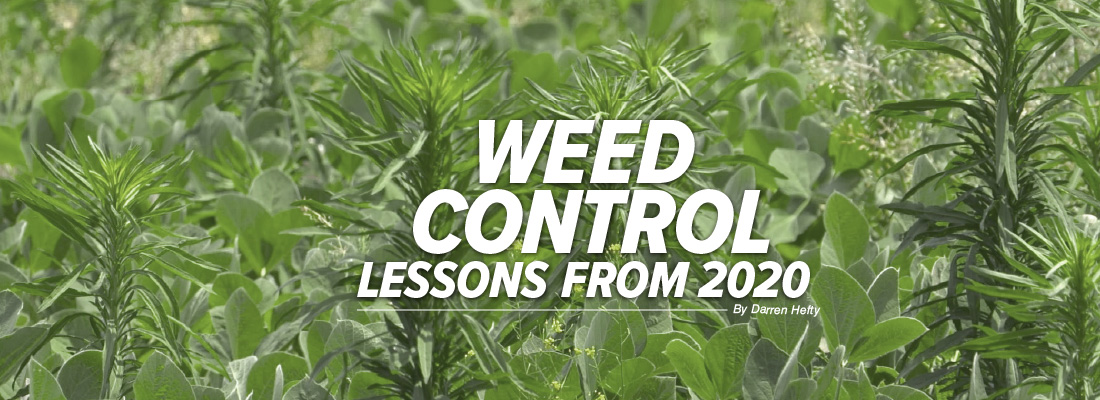
No two growing seasons are ever exactly the same.
I can 100% guarantee you 2021 will be different than 2020. However, there are some key lessons that only a year like 2020 can teach you that will be valuable for the rest of your farming career.
Let’s look at just one set of lessons today: weed control.
Dry Weather
Your definition of dry conditions may be a little different than mine, but we can all agree it’s a problem if you are not getting timely rainfall when you need it. When it comes to weed control, that impacts things in at least two ways.
- Rain makes residual herbicides work.
- Rain keeps weeds actively growing and not in defense mode.
With residual herbicides, we’ve all seen or heard the advertisements. “Our product works with only one inch of rain.” Then, the next one claims to work with “only a half inch of rain.” Some claims even get more ridiculous than that.
So, what do you really need?
- Dry soils need a minimum of one inch of rain and likely much more to get residuals to work 100%, not 90% or 95%.
- Soil with good moisture levels needs less rain to make residuals work.
- Soil incorporation reduces the amount of rain needed to make residuals work.
- Residuals applied after planting need rainfall ASAP as they can’t pull down emerged weeds well.
- Applying residuals in the fall or very early spring gives you more time to catch the needed rain.
Grass Control in Corn
If your grass control quit working partway through the season, you’re not alone. Especially in corn this year, late emerging grasses were tough – and let’s face it, they have been more of a problem for the last few years. There are two strategies to fix this…
- Add more Group 15 to your PRE. Simply increasing the rate of any of the Group 15’s (Harness, Surpass, Zidua, Outlook, Dual, etc.) up to the full rate can solve many of your annual grass problems, especially with foxtail control.
- Add a Group 15 to your post-emerge application. Just like what you’re probably doing in your soybeans, adding a Group 15 to your early post-emerge application can extend your residual control. Personally, I like Option 1 better since the Group 15’s have no contact weed control and need more rain to start working. Option 1 is more predictable. However, Option 2 may extend your residual later in the season.
The Dreaded Pigweed (and Other Broadleaves)
Pigweed (waterhemp, Palmer, etc.) control is being helped with cover crops, planting earlier in the spring, getting a thicker crop canopy, narrowing rows, and a host of cultural practices. Frankly, we’re hearing a ton of success stories on pigweed control. At the same time, there are some tough-looking fields.
From a herbicide standpoint, the 3 PRE strategy in soybeans is really working even in a dry year like 2020 was for many. Using a yellow like trifluralin or Prowl, plus a PPO like Valor or Authority, and adding metribuzin really works. The lesson from 2020 was to do it earlier to catch some moisture to get it working.
There were some broadleaf weeds that were tougher than normal this season, though, and could change your plans to stop them in 2021.
- Kochia – Drought conditions in the West caused kochia and other weeds to harden off and not take in herbicide well. More pre-emerge control, adding crop oil to post applications (where labeled), fall weed control sprays, and targeting days with moderate temperatures and more humidity in the spring/summer were all more effective control strategies.
- Winter Annuals – Fall herbicide applications worked well. Cool spring conditions led to a lot of the problems we saw with winter annuals as contact herbicides do not work well when it’s cold. As a result, we did see an uptick in fall applications in 2020.
- Velvetleaf – I can’t believe how many velvetleaf calls I got this year. For whatever reason, some growing seasons seem to favor one weed over another. Velvetleaf is easily controlled with some of the pre-emerge treatments (depending on the crop you’re planting) like Command, Python, and TripleFLEX. Post-emerge, the HPPD’s in corn and other crops work well. Also, contact herbicides like Resource and Cadet are fantastic at bringing down even big velvetleaf.
